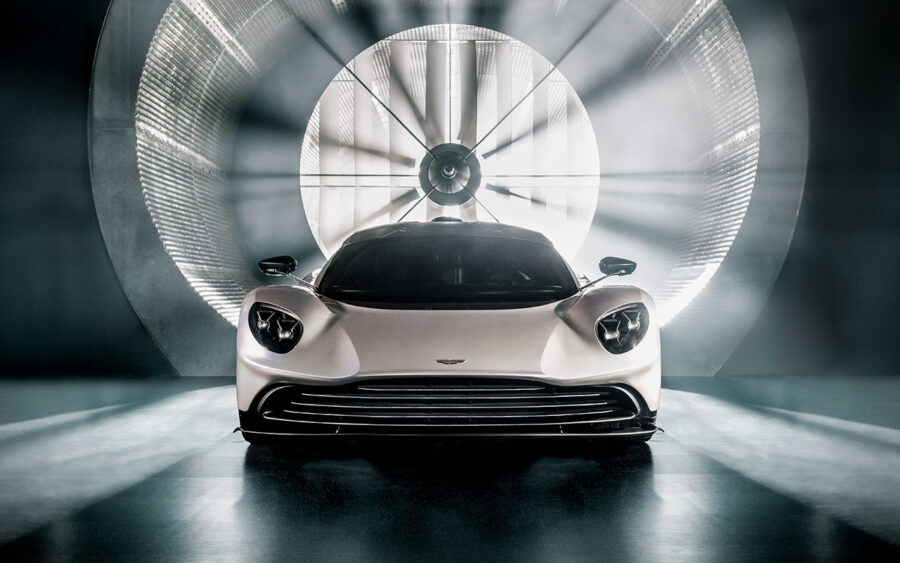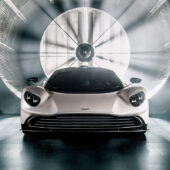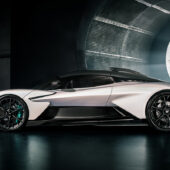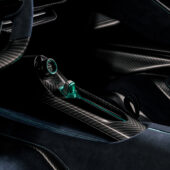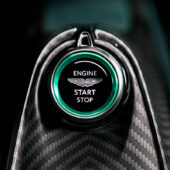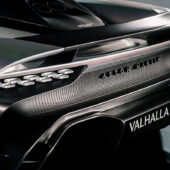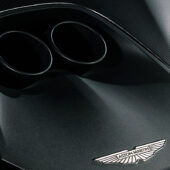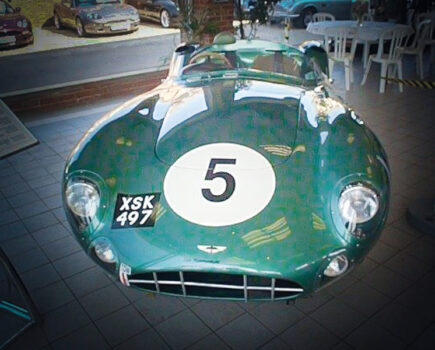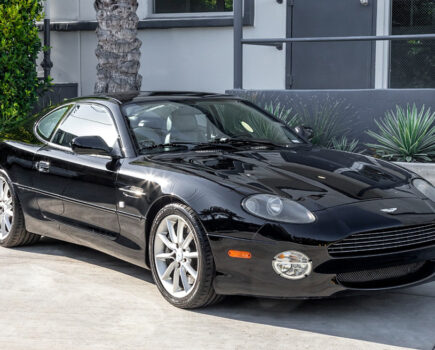Limited-run Aston Martin Valhalla to incorporate F1-inspired ‘dynamics, aerodynamics and materials’ as it takes the fight to Ferrari
The long-anticipated Aston Martin Valhalla, the British firm’s next limited-run supercar, is set to go into production in 2024 sporting a number of F1-inspired touches. Aston Martin has confirmed that the new car will be limited to 999 examples, with the first running prototype hitting the road later in 2023.
The Valhalla started life as a Red Bull Racing-backed project with the 2019 AM-RB 003 concept before a rethink saw development return in-house. The Valhalla has since benefited from involvement from the consulting arm of the Aston Martin Formula One team, Aston Martin Performance Technologies (AMPT), with specific focus on ‘dynamics, aerodynamics and materials’.
Power comes from a twin-turbocharged V8 and three electric motors producing a total of 998bhp (1,012PS). The Valhalla will feature all-wheel drive with torque vectoring thanks to the two electric motors on the front axle; the third motor is incorporated into the transmission for extra power and as a mild-hybrid style starter motor.
Aston Martin has worked with AMPT to develop the Valhalla’s driving characteristics almost completely in simulations, with help from Aston Martin F1 drivers Fernando Alonso and Lance Stroll. The final phase of development will follow later this year when the first prototype hits the road (and track).
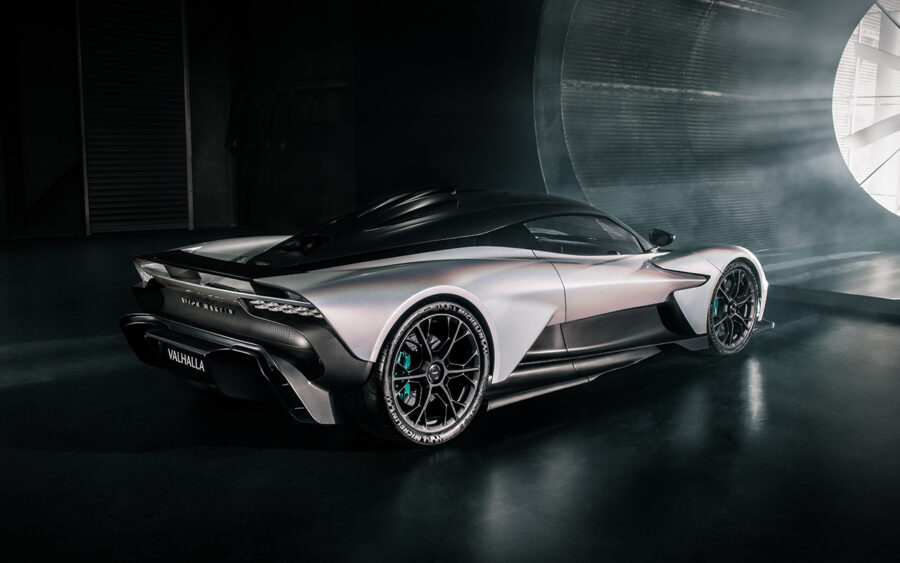
The direct F1 connection continues in the car’s driver-focussed cockpit, which features a driving position designed with AMPT ‘to provide the driver with race car level control in order to maximise the pleasure of driving’, according to Aston Martin. A false floor raises the driver’s heels, while the carbon fibre bucket seat can be reclined to a position similar to that in the Aston Martin AMR23 F1 racer – albeit with some practical concessions to comfort. The recumbent seating position also means the Valhalla’s roofline is as low as possible.
That low profile also feeds into the focus on F1-bred aerodynamics. Most of the car’s downforce is produced by its underside, which according to Aston closely resembles that of the F1 car. The Valhalla’s entire body has been optimised to create downforce and/or minimise drag, while active aerodynamics are also employed front and rear.
The result, according to Aston, is over 600kg of downforce – a figure made easier by the fact that the Valhalla ‘is not restricted by F1 regulations’, unlike its open-wheel motorsport cousin. The same computational fluid dynamics software used to assess the F1 car’s aerodynamics was also implemented in the Valhalla’s development, as well as the same scale-model wind-tunnel testing.
The Valhalla is fitted with multi-element front and rear wings, which as part of the Valhalla’s ‘full vehicle active control algorithms’ can be angled for more or less drag as required, in conjunction with a concave section of the car’s floor. The rear wing is also controlled by the same system; in track mode, the wing is raised and is actively controlled by the car. Other aerodynamic features include vortex generators, sill louvres and an F1-inpired roof snorkel.
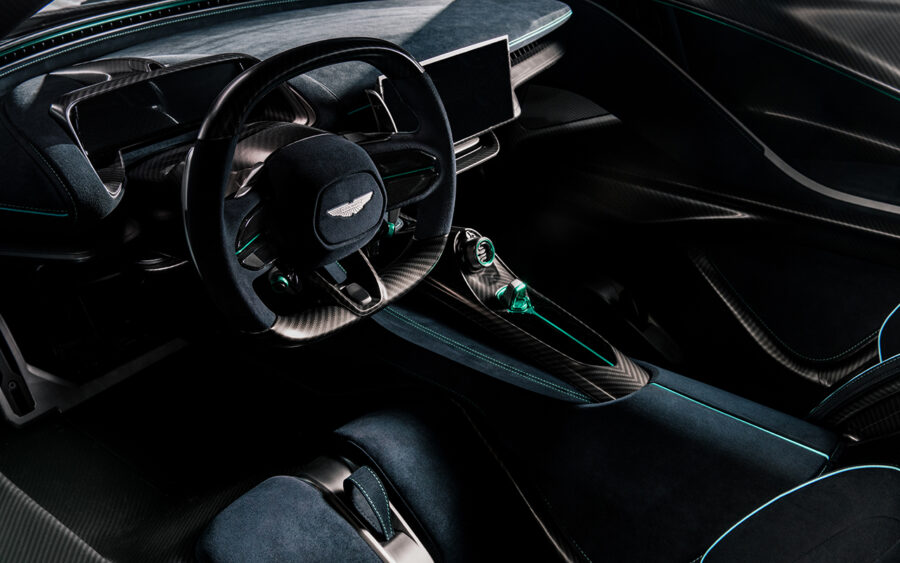
Carbon fibre is used throughout, with AMPT helping to bring lessons learned from F1 to maximise the car’s crash-worthiness and minimise weight. The Valhalla’s structure uses a proprietary moulded carbon fibre which helps to create a ‘singular, immensely stiff, strong and light passenger cell which delivers best-in-class dynamic structural attributes and outstanding safety, without compromising driver and passenger ergonomics,’ according to Aston.
“Our target for Valhalla is to produce a supercar that will set best-in-class standards for performance, dynamics and driving pleasure, said Carlo Della Casa, Aston Martin product development director.
“Valhalla will use active technologies to reduce the gap between the ‘gentleman driver’ and the professional one on track,” Della Cassa said. “Having open access to the knowledge within the AMF1 team has been a huge advantage for us as we develop this incredible car.”
An on-sale date and prices for the Valhalla are yet to be announced by Aston Martin, but it’s likely to sell out fast regardless of price. It’s safe to expect a high six-figure price tag, if not a Valkyrie-style seven-figure sum.

